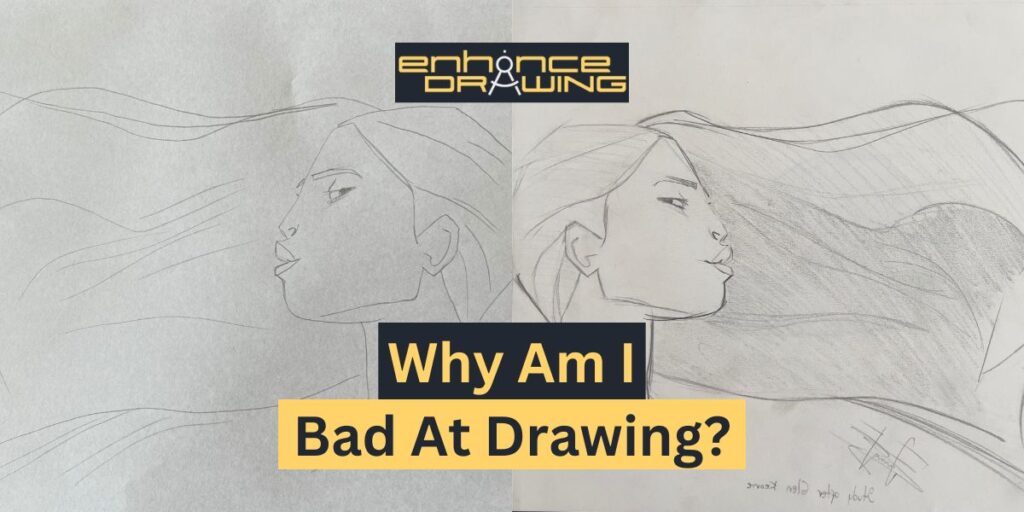
Nothing’s quite as disheartening and frustrating as that feeling of not seeing improvement in your drawing skills. You’ve invested countless hours and made numerous attempts, yet your drawings still don’t meet your expectations. You feel like you’re bad at drawing.
But here’s the reassuring truth: you’re not alone in this struggle. Thousands of artists have faced the same challenges, and many of them have overcome them to achieve success.
You can too.
I’ve dedicated years to honing my drawing abilities, investing countless hours in unraveling the secrets to creating remarkable artwork, and I’m here to share that knowledge with you. I understand the frustration that comes with doubting your drawing skills, and I’m committed to helping you break free from that feeling once and for all, enabling you to elevate your artistry like never before.
By the time you finish reading this blog and engage with the concepts and exercises I’ll provide, my goal is for you to prove to yourself that you are not bad at drawing and have the capacity to draw beautifully. I want to demonstrate that you have the potential for improvement and can evolve into an astonishing artist.
Shall we get started?
1) Without Fundamentals, Drawing Is Too Complex
I want to start with one of the main factors differentiating beginners from pro artists: their drawing process. This process is called simplification, and you have probably heard about it before. The simpler your drawing process is, the easier it will be to construct a rich and complex artwork.
I will dive into the details and how to learn to do this, but before that, I want you to do this exercise with me. I want to demonstrate to you that you can draw anything if you learn how to approach it.
Grab a pencil and a sheet of paper, follow the steps below, and let’s draw this superhero-like torso together.

Now, take a look at what you did. Is it much better than you expected it to be?
Drawing like this seems magical, and what’s even more magical is that there will be one point in your artistic path in which all these steps will live inside your brain. At that point, you could draw the same torso in half the steps or even without any steps at all, as you will draw them in your head and draw around them on the paper.
However, simplification is not easy to learn, despite its name. It will require that you study anatomy, gesture, perspective, and so on. In the case of the torso, there is a clear understanding of the figure and anatomy, which we then simplify into its basic shapes and then add detail.
Now, look at this dog silhouette: If you were to attempt to draw this dog in one go without breaking it into its basic shapes, the final drawing could potentially look more messy, disproportionate, and simply not right.
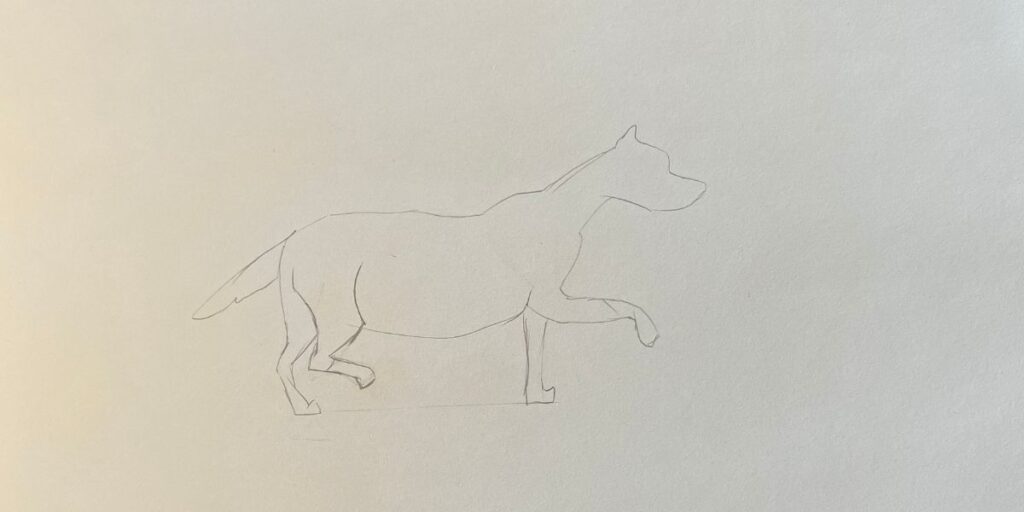
But if you study the subject and simplify it into its basic shapes, you will have a better result.
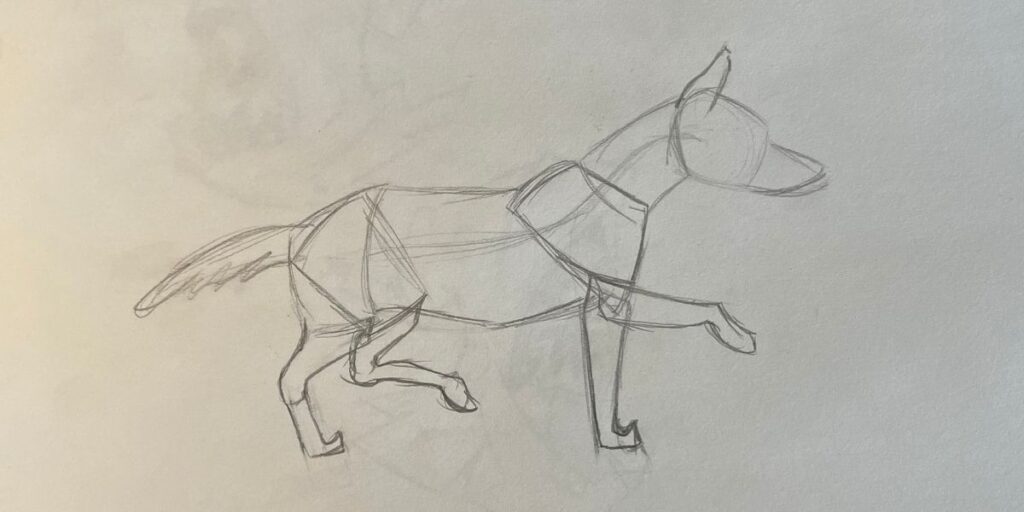
Getting it right in one go is something that comes with practice and experience.
Bottom line – You need to study the fundamentals: If you want your drawing to start looking better and stop “being bad at drawing,” you must pick a drawing fundamental to study. I recommend you start with gesture. Here’s a blog I made about why drawings look stiff that covers the basics of it.
Now you can see why studying the fundamentals is essential! If you know them, you will be able to mix them together and start drawing beautiful drawings from your imagination.
But what if you already have some basic knowledge about this and can’t get your drawings right anyway? Here’s when the next reason comes in.
2) You Need To Train Your Eyes To See Better
Just as studying the fundamentals, learning to see is equally important for drawing. Our brain is a very effective flesh machine, and instead of looking at every line, edge, or little detail that constructs a subject, it looks at the whole.
It had to be like that. It filters all the information we perceive and helps us understand what surrounds us in seconds. Unfortunately, filtering information like that is not ideal for drawing. It makes us create an incomplete mental image of how things should look instead of how they actually look.
To resist this, we need to shift from the conceptual understanding of things to the perceptual observation of them. In other words, you need to stop drawing what you think the object looks like and start drawing what the object actually looks like.
Fortunately, there is a fantastic exercise that will help you tap into that concept very easily; it’s called drawing upside down. It is a powerful exercise for training your eyes to see and draw better because it turns the subject you’re drawing into something your brain cannot conceptualize. Hence, the only things it sees are random lines. And anyone can draw those.

This is how the exercise starts. You can see the rest of the steps in the link below.
So, again, just like we did in the previous point, I want you to grab your pencil and another sheet of paper, click this link to see all the instructions about the drawing upside down exercise, and complete it. Apart from teaching your eyes to see and draw better, it will again prove to yourself that you can draw.

At the end, all the little lines you drew one by one will transform into the famous Picasso’s work.
3) You Aren’t Fully Familiar With What You Draw
Anytime we try to draw something new, chances are we will draw it not as good as something else we know how to do. But for our disgrace, being unable to draw anything will always come with the thought, “I’m bad at drawing,” instead of the thought, “I don’t know how to draw that yet.”
There is probably a drawing you can replicate multiple times, and almost every time, it looks great. For me, it was this little cartoony Mario bomb when I was growing up. Since other kids seemed to like it, I would draw this bob-omb everywhere, and it would become even easier to sketch it over time. I was good at drawing (the bob-omb).

Knowing how to draw one thing won’t make you a complete artist, but knowing how to draw multiple things will. Especially because everything you learn to draw will then be part of your mental library, and you will be able to use it in other drawings and compositions you do.
The drawing is very simple, and most people can replicate it and memorize it. However, if you asked me to draw something else back then, let’s say a dragon, I would’ve tried my best and probably produced a weird-looking winged iguana.
This happens with anything you want to draw. The more complex the subject, the more familiar you need to be with it. For example, if you want to draw people and you aren’t familiar with eyes, noses, lips, and just the face in general, chances are you will get a poor-looking drawing due to inexpertise.
So what should you do? You need to start getting familiar with the things you want to learn to draw. If you want to draw people, don’t study people as a whole in one go! Break it down and study just the head. Once you’re good at that, proceed to study the figure. Then, study the muscles and how they connect to the body, and so on.
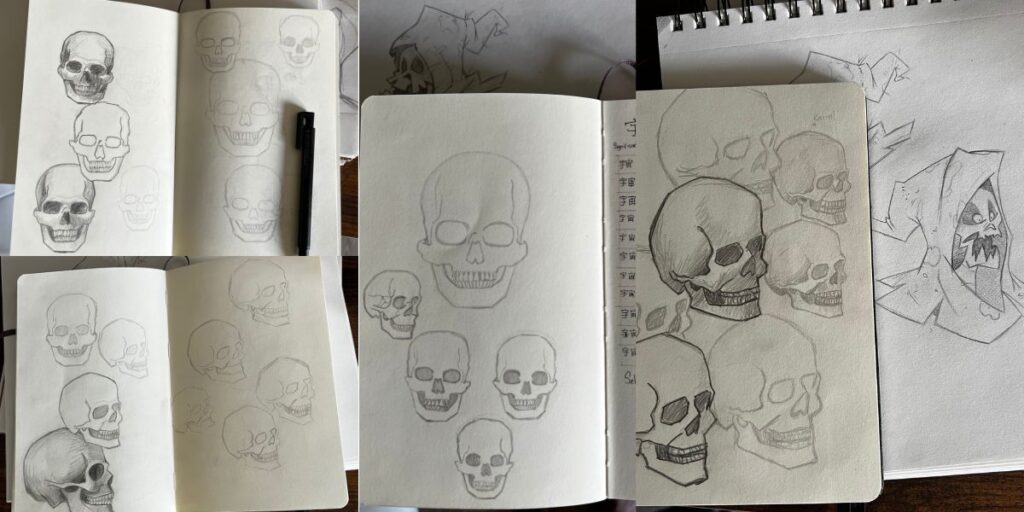
The more familiar you get with anything you study, the more options and freedom you will have when creating your own characters.


4) Your Art Comparison Approach is Counterproductive
In most cases, comparisons don’t serve us in any way. In fact, many people say it makes them feel like they are bad at drawing, unmotivated, and simply worse about their art. Still, we continue to do it and beat ourselves up.
When we say we are bad at drawing, it usually comes from toxic comparisons. We take a drawing that looks “good” and compare it to a drawing we did, and if the other drawing is “better,” then ours is “bad.”
Well, what if we compared that “bad” drawing with an even worse one? Would that drawing now become “good”? Comparisons don’t make any sense in that context, and using them like that will serve us no good.
For me, there are only two ways in which comparisons benefit us.
- Instead of comparing my art to others, I choose to admire and appreciate the art of others, using it as a source of inspiration for what my drawing abilities could become one day if I keep studying.
- When drawing from references, comparing my artwork to the original artist helps me see what I did well and what I could’ve done better.
A great way to practice the second approach of comparing your art to others is to do master studies. In a master’s study, you pick an artist you admire and review their work until you find a piece you want to replicate.
Then, you sit down and draw their artwork as closely as possible to the original. Really spend time figuring out what makes you like that drawing so much and copy that into your replica. Don’t just copy the proportions, but pay close attention to the line thickness and tone the artists use as an attempt to understand how the original artists did the artwork.
Here’s a master study I did of Glen Keane, one of Disney’s legends.
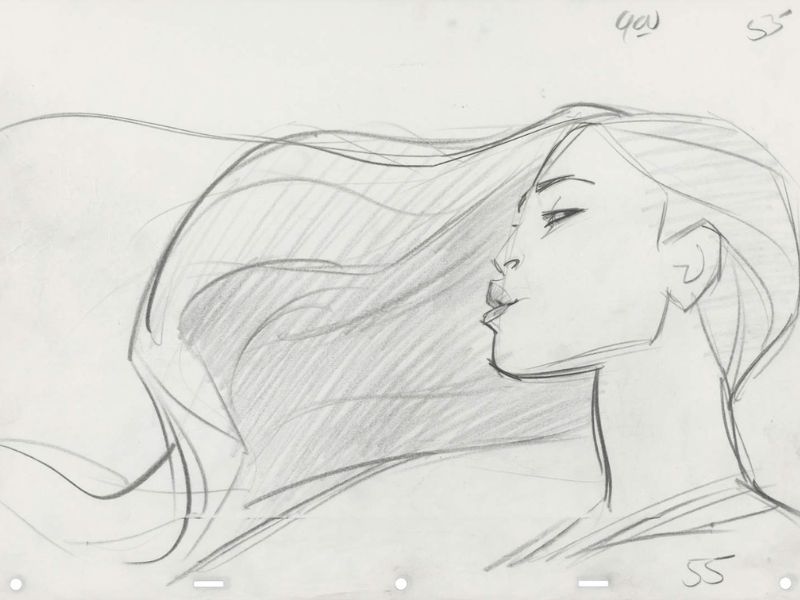
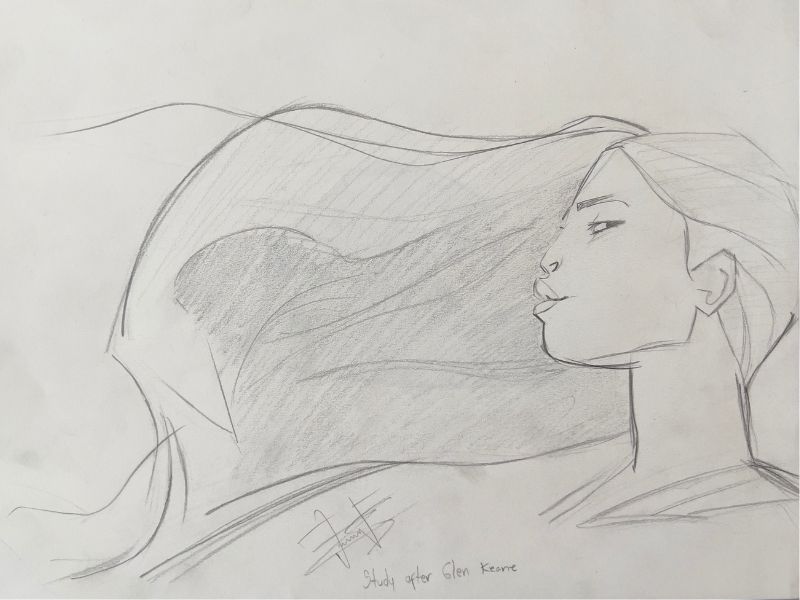
Bottom line – Stop Mindlessly Comparing Your Art To Others. If comparisons make you feel bad, don’t indulge in them as much! And if you do, do it productively. Also, don’t forget the fact that you’re comparing yourself to masters. If I compared my drawings with those of Glen Keane, who has been studying drawing for longer than I have been alive, I would be shooting myself in the foot.
5) You’re Focusing on Results and Not on Progress
Nothing is more effective at making you believe you are bad at drawing than focusing on results instead of the progress you’ve made. As artists, we are always learning to draw, and it’s important to notice our progress to keep ourselves motivated.
This will be more of a mentality change than a drawing change, but I will still give you an amazing exercise you can try to prove to yourself you can improve. Hence, you can become a fantastic artist if you keep practicing.
If you’re struggling with thoughts of not being good enough to draw, feeling scared to show your art, or finding the process of drawing an unpleasant experience, I recommend you read this blog about how to enjoy drawing and read the book Growth Mindset.
How resilient you are to the drawing challenges will dictate how good of an artist you will become. How much you push through the aspects of drawing you find difficult or boring will dictate your potential to become a great artist. Build up that resilience and discipline.
So, follow these 5 steps to prove to yourself you can improve at drawing.
- Keep a record of your drawings: To do this exercise, you need to write the date you finished the drawings. This is critical to be able to evaluate your progress.
- Pick a subject to draw: This can be anything you want to study and understand. You will be drawing this subject for at least two weeks.
- Draw the subject from reference: Use references to draw the same subject from different perspectives.
- Continue drawing the same subject: Keep drawing from reference. However, if you have drawn the subject enough times, you could start attempting to draw it from memory now.
- Compare from day one to day 14: Draw the same subject again, and compare it to your first attempt. Evaluate if you improved or not.

Ultimately, you would have drawn the same thing so many times you won’t need references anymore. They’ll be stored in your mind as a reward for your hard work. That’s the end goal.
Bottom line – You need to believe in your ability to improve: No artist was born an expert. Even though you could find exceptional individuals here and there, they all share one thing in common: thousands of hours studying drawing. Every time you draw and practice deliberately, you will improve; it’s inevitable!
So, if you like drawing, don’t worry about the results; these will naturally show over time.
I wish you the best in your drawing sessions!
